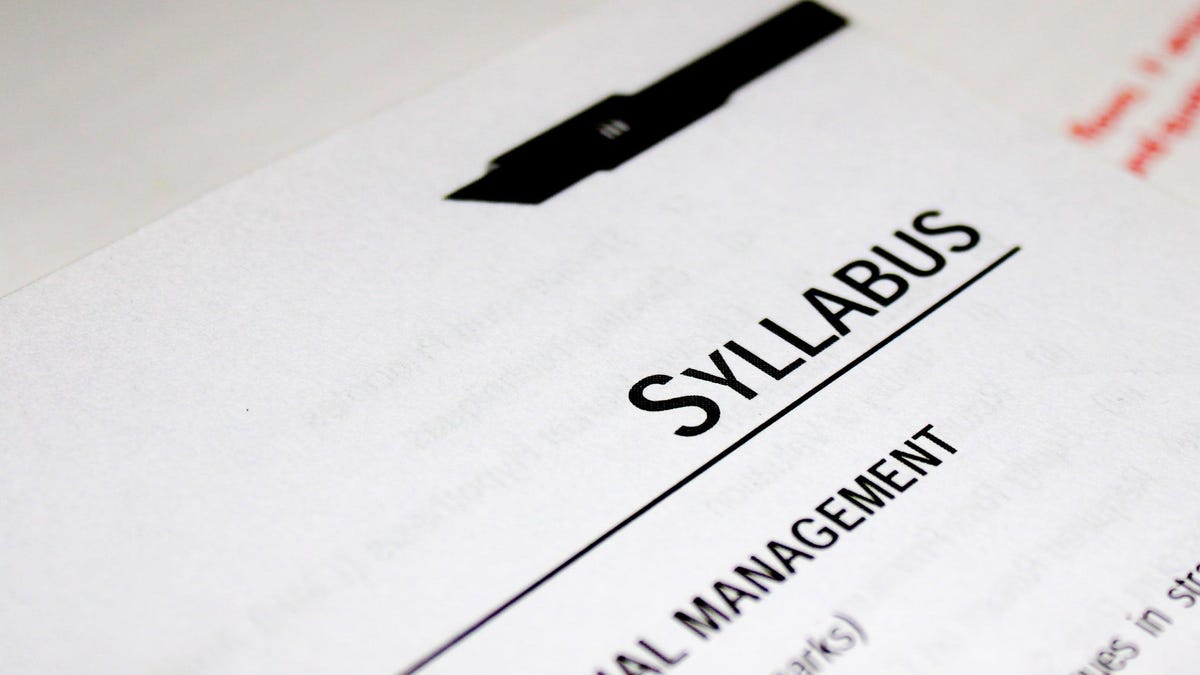The Three Most Important Parts of a Syllabus
At the beginning of every course, you are handed a syllabus. The best of them are short. The worst ones are way too long. They can include all kinds of information, from a list of materials to a long...

At the beginning of every course, you are handed a syllabus. The best of them are short. The worst ones are way too long. They can include all kinds of information, from a list of materials to a long essay about your professor’s teaching philosophy. A friend of mine once got a 20-page syllabus that included poems written by the instructor—and their first assignment was to write a poem based on the syllabus. (It was not a poetry class.)
These documents are supposed to help you prepare for and stay on top of your work in the course, but if you get too many filled with extraneous information, you may start to ignore them altogether. Don’t do that. Every syllabus contains at least three vital pieces of information you need to look for.
Assignment due dates
The first thing you should look for on your syllabus is the schedule of when assignments are due and when tests will take place. If that schedule isn’t on there, ask your professor to email it to you—and everyone else—right away, but it should be; it’s one of the key elements of any useful syllabus.
It’s a good idea to copy this schedule into your notes and add key dates to your calendar or the apps you use to plan your studying. This is really the most important information you need to know about and stick to. The syllabus will probably also include learning objectives in this section, and while these are important, your most basic goal (beyond hopefully learning something) is to get a good grade. If you stick to the schedule and get your work done, you’ll meet the learning objectives naturally, so don’t focus too hard on them at the start.
Grading structure
Most syllabi will break down the semester’s grading structure as well. For instance, a midterm might be worth 30% of your grade, while a group project might be worth 40%. These are important to keep in mind too. Teachers sometimes get a little flowery in their zeal for writing down their pedagogical philosophy, and while that sort of thing can help you complete the assignments to their liking, you’re better off focusing on the objective facts about what each assignment is worth in terms of your final grade.
If attendance counts toward your grade, that should be noted too, likely in the same section where the percentage breakdown of your final grade is listed. Pay close attention there; skipping required classes can be a grade-killer, even if you nail everything else.
Course materials
Finally, look for the list of course materials. Professors should include any necessary books, tools, software, or field assignments in the syllabus. Don’t delay in acquiring whatever it is they say you need. If your goal is to cut through the noise of the syllabus and the class at large and just get a good grade, the book or other required resources are what will help you to do that.
Everything else on the syllabus—academic integrity policies, course overviews, learning objectives, professors’ musings—is fine to read over, but don’t get too lost in the excess, and don’t toss out a too-wordy syllabus before you’ve extracted the three vital bits of information noted above.
What to do if a syllabus doesn’t include those three things
If a syllabus is vague about or doesn’t include these three key features, email your professor immediately to ask for clarification on them. Depending on how they respond, you can use your own discretion as to whether you want to escalate the issue to a dean, but consider that it is the instructor’s responsibility to provide you—and anyone who takes the class in the future—with a clear outline of what is expected of you, when it’s due, and how it will affect your final grade.

 Troov
Troov 































